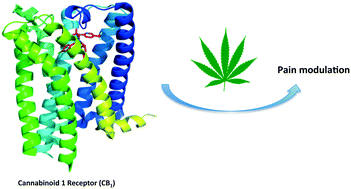
“A recent meta-analysis affirmed the benefit of medicinal cannabis for chronic neuropathic pain, a disabling and difficult-to-treat condition. As medicinal cannabis use is becoming increasingly prevalent among Americans, an exploration of its economic feasibility is warranted. We present this cost-effectiveness analysis of adjunctive cannabis pharmacotherapy for chronic peripheral neuropathy.
A growing body of scientific literature demonstrates reproducible efficacy of cannabis in the treatment of several medical conditions, including chronic neuropathic pain. Clinical trials of oral, smoked, and vaporized cannabis and cannabinoids have all demonstrated analgesic benefit of medicinal cannabis in the treatment of this costly and disabling condition. A recent meta-analysis of individual patient data from five randomized controlled trials of inhaled cannabis demonstrated pain relief comparable to gabapentin. Treatment guidelines for neuropathic pain recommend consideration of cannabinoids as third-line agents.
As recently proposed willingness-to-pay thresholds for the United States health marketplace range from $110,000 to $300,000 per QALY, cannabis appears cost-effective when augmenting second-line treatment for painful neuropathy. Further research is warranted to explore the long-term benefit of smoked cannabis and standardization of its dosing for chronic neuropathic pain.”
https://www.ncbi.nlm.nih.gov/pubmed/30944870
https://www.liebertpub.com/doi/10.1089/can.2018.0027



 “Increases in cancer diagnosis have tremendous negative impacts on patients and their families, and major societal and economic costs. The beneficial effect of chemotherapeutic agents on tumor suppression comes with major unwanted side effects such as weight and hair loss, nausea and vomiting, and neuropathic pain. Chemotherapy-induced peripheral neuropathy (CIPN), which can include both painful and non-painful symptoms, can persist 6 months or longer after the patient’s last chemotherapeutic treatment. These peripheral sensory and motor deficits are poorly treated by our current analgesics with limited effectiveness. Therefore, the development of novel treatment strategies is an important preclinical research focus and an urgent need for patients. Approaches to prevent CIPN have yielded disappointing results since these compounds may interfere with the anti-tumor properties of chemotherapeutic agents. Nevertheless, the first (serotonin noradrenaline reuptake inhibitors [SNRIs], anticonvulsants, tricyclic antidepressants) and second (5% lidocaine patches, 8% capsaicin patches and weak opioids such as tramadol) lines of treatment for CIPN have shown some efficacy. The clinical challenge of CIPN management in cancer patients and the need to target novel therapies with long-term efficacy in alleviating CIPN are an ongoing focus of research. The endogenous
“Increases in cancer diagnosis have tremendous negative impacts on patients and their families, and major societal and economic costs. The beneficial effect of chemotherapeutic agents on tumor suppression comes with major unwanted side effects such as weight and hair loss, nausea and vomiting, and neuropathic pain. Chemotherapy-induced peripheral neuropathy (CIPN), which can include both painful and non-painful symptoms, can persist 6 months or longer after the patient’s last chemotherapeutic treatment. These peripheral sensory and motor deficits are poorly treated by our current analgesics with limited effectiveness. Therefore, the development of novel treatment strategies is an important preclinical research focus and an urgent need for patients. Approaches to prevent CIPN have yielded disappointing results since these compounds may interfere with the anti-tumor properties of chemotherapeutic agents. Nevertheless, the first (serotonin noradrenaline reuptake inhibitors [SNRIs], anticonvulsants, tricyclic antidepressants) and second (5% lidocaine patches, 8% capsaicin patches and weak opioids such as tramadol) lines of treatment for CIPN have shown some efficacy. The clinical challenge of CIPN management in cancer patients and the need to target novel therapies with long-term efficacy in alleviating CIPN are an ongoing focus of research. The endogenous 
 “Neuropathic pain can develop after nerve injury, leading to a chronic condition with spontaneous pain and hyperalgesia.
“Neuropathic pain can develop after nerve injury, leading to a chronic condition with spontaneous pain and hyperalgesia.
 “Neuropathic pain (NP) is associated with chronic hyperglycemia and emotional disorders such as depression in diabetic patients, complicating the course of treatment. Drugs currently used to treat NP have undesirable side effects, so research on other natural sources has been required.
“Neuropathic pain (NP) is associated with chronic hyperglycemia and emotional disorders such as depression in diabetic patients, complicating the course of treatment. Drugs currently used to treat NP have undesirable side effects, so research on other natural sources has been required.


 “The endogenous
“The endogenous